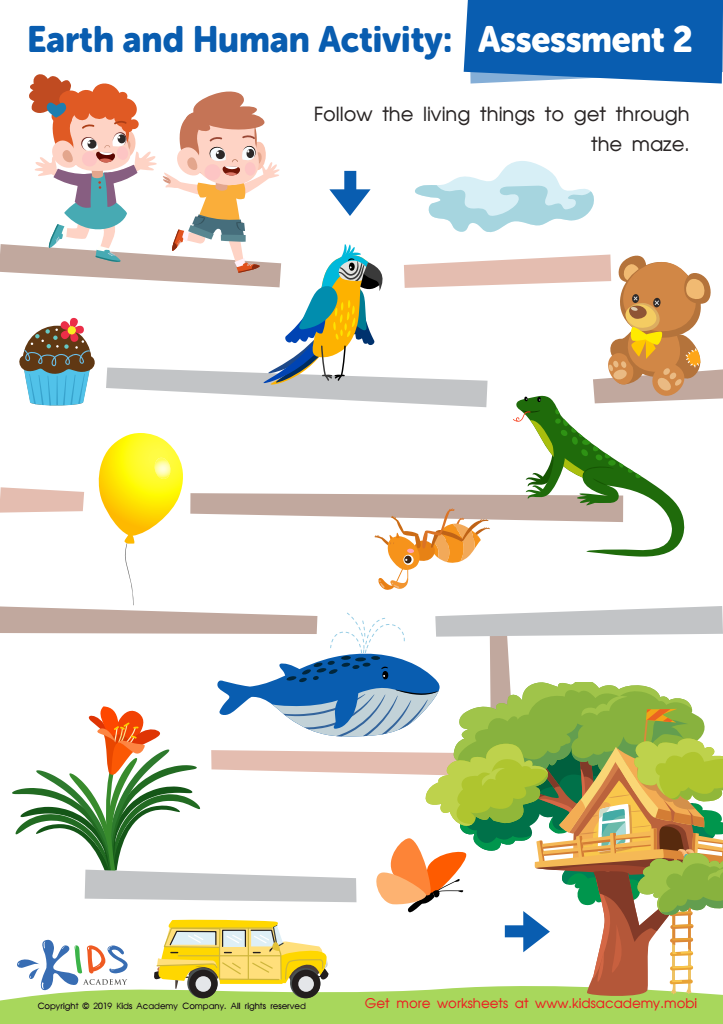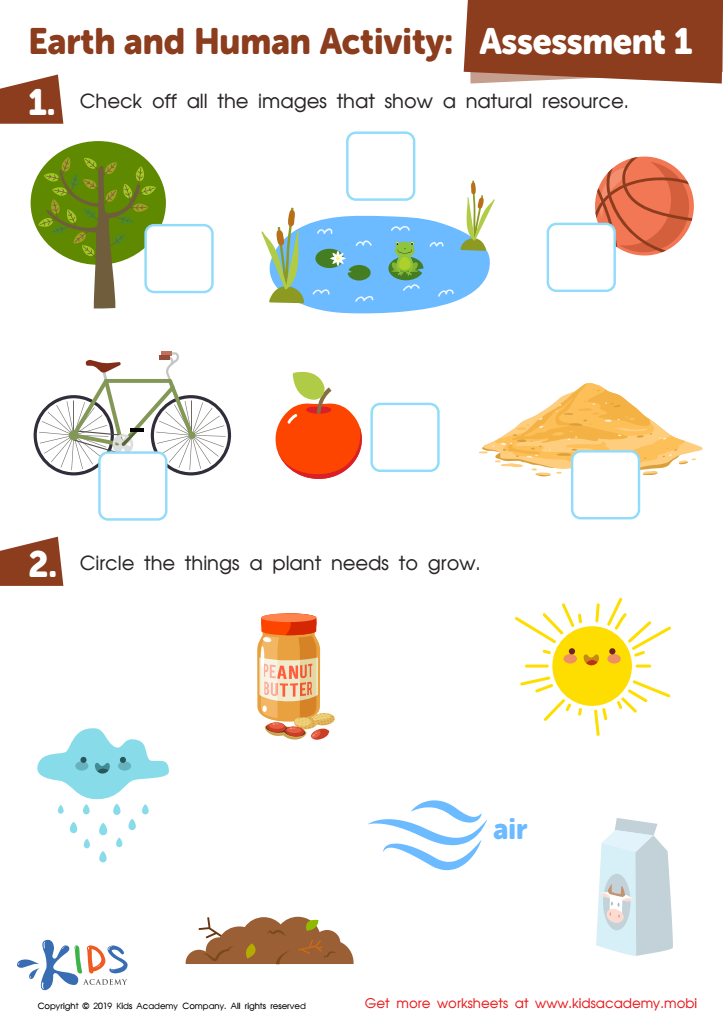Plants and Animals worksheets activities for Ages 5-6
2 filtered results
-
From - To


Earth and Human Activity: Assessment 2 Worksheet


Earth and Human Activity: Assessment 1 Worksheet
Plants and Animals worksheets activities are an incredibly useful tool for educators and parents alike, serving as a bridge between young learners and the fascinating world of biology. These activities are not just about filling out pages; they are a gateway to understanding the intricate lives of plants and animals, fostering a sense of curiosity and respect for nature in students.
Firstly, Plants and Animals worksheets activities are designed to cater to a variety of learning styles. Whether a child learns best through reading and writing, visual representation, or hands-on activities, worksheets can be adapted to meet these needs, making the learning process more engaging and effective. They help in breaking down complex biological concepts into manageable pieces, making it easier for children to grasp the essentials of photosynthesis, the food chain, and animal habitats, among other topics.
Moreover, these worksheets encourage critical thinking and problem-solving skills. As students work through questions, match columns, or complete diagrams, they are not just memorizing facts but also applying their knowledge to solve problems. This analytical approach is crucial for developing scientific thinking.
Incorporating Plants and Animals worksheets activities into learning also enhances retention. The process of writing down answers and engaging actively with the material aids in committing information to memory more efficiently than passive reading or listening. Additionally, these activities can be revisited to reinforce knowledge without the monotony of repetition, as diverse worksheets offer new and interesting ways to explore the same concepts.
Lastly, these worksheets activities are invaluable for sparking a lifelong interest in biology. By introducing students to the wonders of the plant and animal kingdoms in an interactive and enjoyable manner, educators can inspire a generation of nature enthusiasts and potential future scientists.
In essence, Plants and Animals worksheets activities are more than just educational resources; they are building blocks for a deeper understanding of the natural world, critical thinking skills, and a lasting curiosity about life sciences.
 Assign to the classroom
Assign to the classroom



.jpg)








